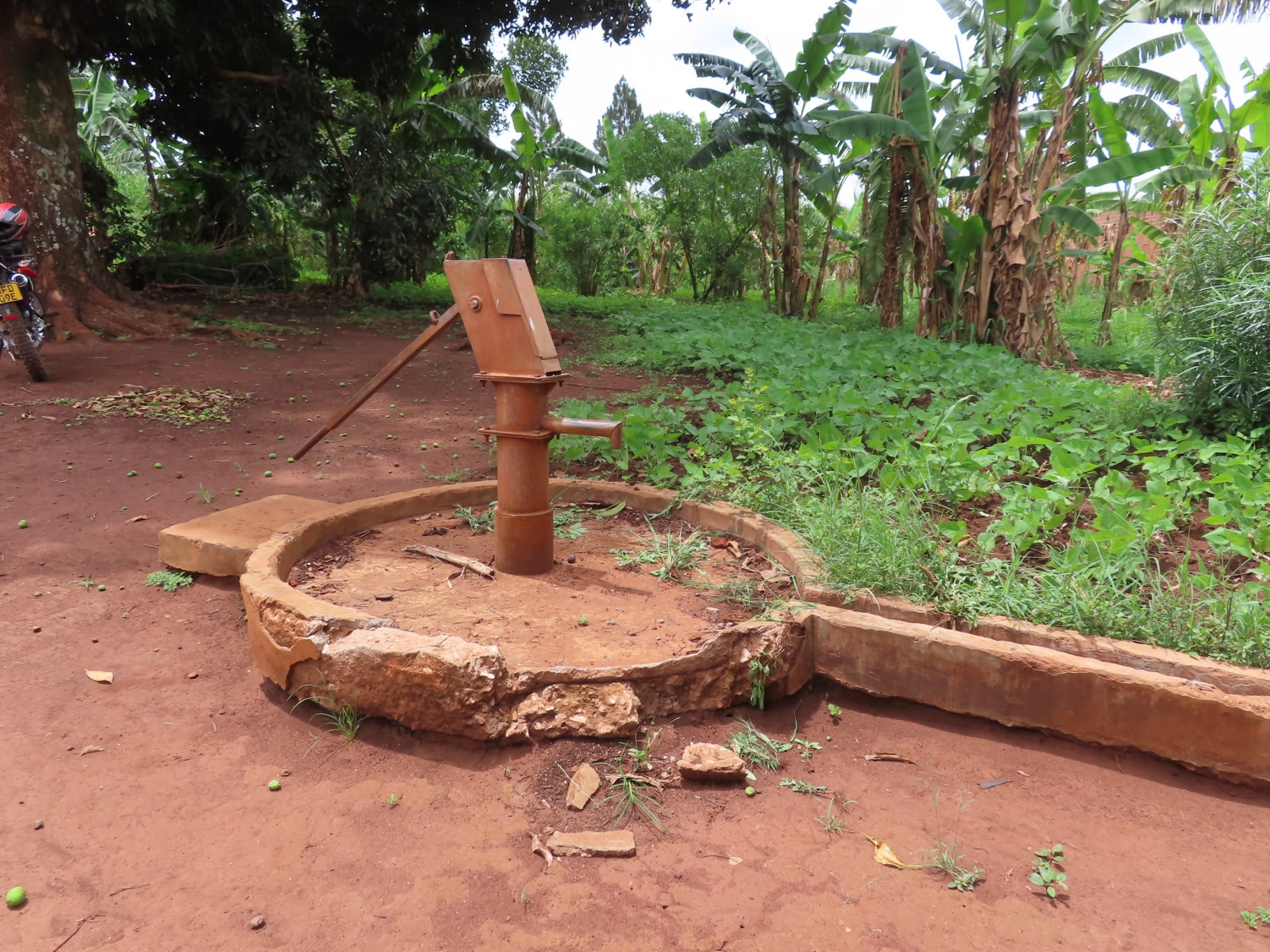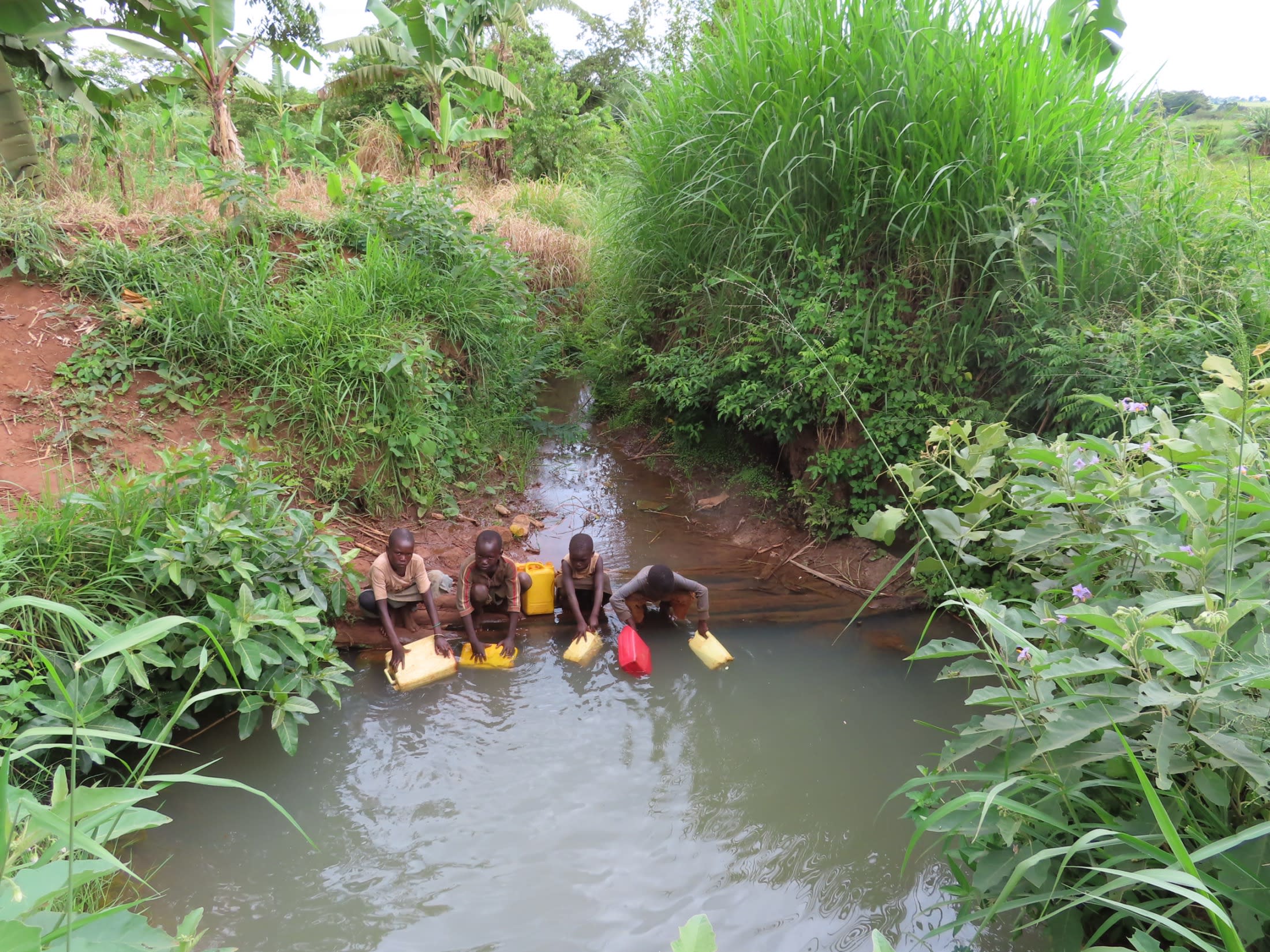In this hilly area covered with undulating plains, village community members wake up by 6 AM. Men collect water by bicycle or motorcycle due to the long-distance, while women clean around the compound and prepare breakfast by 8 AM. Then the men are off to the gardens for the day, and the women remain at home doing other domestic activities.
The most common livelihood in the community is farming crops of beans, maize, and sugarcane which are sold at a market bordering the neighboring village to earn money. Others have small, petty businesses at the nearby trading centers to boost their household incomes.
"The piped water scheme which was constructed by the government is no longer helping us. Runoff across the road directs itself to the storage reservoir, making the water very contaminated. There have always been frequent breakdowns which made us opt for open water sources and moving to other neighboring villages. How I wish our borehole could be repaired to save us from all these challenges," said Benjamin, a 50-year-old farmer.

The main water source for the community is a borehole that is currently not functional and in need of rehab. There are two alternative water sources people have been accessing since the borehole broke down. An open-source is located about 2km away at the extreme ends of the village, where water is accessed through a scoop hole covered by logs. There are gardens nearby, and during the rainy season, the runoff directs itself into the open-source, making it contaminated and not fit for consumption. Another alternative water source is sporadic, often contaminated, piped water that many can not afford. It is not serving its purpose as it is not reliable, sometimes going months without water.

"The current water situation has made it very difficult for me to go to the well because of the long-distance one has to walk to collect water. Sometimes when I go to the water source with other children, we find snakes in the water, and there is a steep valley which makes it hard for me to access the source. My mother then stopped me from going to the water sources because of the risks encountered. When this borehole is repaired, I will then begin fetching water since it's nearer to home," said 8-year-old Beatrice.
The health consequences of community members accessing these contaminated water sources include serious skin rashes, diarrhea, and typhoid. Hygiene and sanitation in most homes are still major challenges with the community's water scarcity because people prioritize water for cooking and drinking purposes primarily.
Here’s what we’re going to do about it:
Rehabilitated Well
We are going to restore water to the broken-down borehole. Since this water point is located at the center of the village and easily accessible by the majority of people, unlike the springs which are located at the far ends of the village, when this borehole is restored to its original status it will provide the community with easy access to clean and safe water. We will remove the old pump, clear out the well, reinstall a new stainless steel pump, and build a new well pad to protect the water.
Training
Training’s main objectives are the use of latrines and observing proper hygiene practices since these goals are inherently connected to the provision of clean water. Open defecation, water storage in unclean containers, and the absence of handwashing are all possible contaminants of a household water supply. Each participating village must achieve Open Defecation Free status (defined by 1 latrine per household) before the pump installation for a shallow hand-dug well.
This social program includes the assignment of 1 Community Development Officer (CDO) to each village. The CDO encourages each household to build an ideal homestead that includes a latrine, handwashing facility, a separate structure for animals, rubbish pit, and drying rack for dishes.
We also implement the Community-Led Total Sanitation (CLTS) approach with each of our village partners. This aims to improve the sanitation and hygiene practices and behaviors of a village. During these sessions, village leaders naturally emerge and push the community to realize that the current practices of individual households – particularly the practice of open defecation – are not only unhealthy but affect the entire village. CLTS facilitates a process in which community members realize the negative consequences of their current water, sanitation, and hygiene behaviors and are inspired to take action. Group interactions are frequent motivators for individual households to build latrines, use the latrines, and demand that other households do the same.
Improved Sanitation
The aim is that all households own an improved latrine. Many households do not use a latrine but use the bush. Due to open defecation, feces are spread all over the village. This leads to waterborne diseases and contamination of groundwater and surface water. Our aim is that the community is able to live a healthy life free of preventable diseases. We endeavor that at the end of our presence in the community, people will have both access to sustainable, clean water and access to sanitation. We have now organized families to form digging groups for latrine construction, and empowered them with tools they will need.

 Borehole Well and Hand Pump
Borehole Well and Hand Pump




























